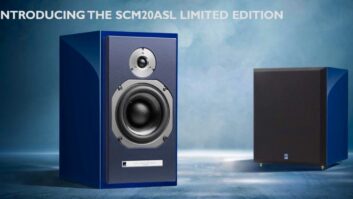CE retailers acknowledge that the advent of interoperability standards could eventually create a meaningful business model for the sale of cable subscriptions, hardware and other related services.
But in the meantime, dealers say, selling cable TV is almost more trouble than it’s worth, due to the morass of systems, terms and offerings; operators’ inexperience with retail; limited opportunities to sell high-margin hardware; and the slim profit in subscriptions.
“It’s a tough one for retailers,” observed Ray Brown, VP/general manager for CE at Sears, which maintains ongoing discussions with multiple system operators (MSOs), but doesn’t presently sell their services. “With 67 million households already in a cable relationship, the thing I have to work hard at is, what is it that Sears can provide customers? Why wouldn’t the customer just pick up the phone and call their cable company? What’s the value added in services or goods that we bring?”
With the model for selling cable and high-definition service at retail “still up in the air” while operators flesh it out, satellite TV remains the dealer’s best bet, Brown said. “It’s different because of the whole installation aspect.”
For Tweeter Home Entertainment Group, the payoff lies down the road in sales of new digital hardware — at least until integrated, digital cable-ready TV sets advance from one-way to interactive capabilities.
In the meantime, the national A/V chain must content itself with selling subscription starter kits for Comcast, which yield some margin and a one-time bounty, and installing leased cable boxes for Time Warner, RCN and other MSOs in limited markets.
“We would like to be able to sell set-top boxes for Comcast,” said video merchandise manager Kari Seward, “but Comcast gives them away for $5 a month, compared to $500 or $600 to buy it from us. Why would the consumer want to do that?”
While a couple of cable companies including Cox Communications are experimenting with set-top box sale offers, that approach is unlikely to perpetuate, Seward said. MSOs are “used to having the lease model on their books,” she argued, while integrated TVs will eventually incorporate most decoder technology, leaving smart cards as the sole sales opportunity in hardware.
Tweeter’s biggest challenge in selling cable TV service is its regionalism, which Seward said recalls the early days of cellular coverage. “As a national company, providing different cable offers throughout different footprints is disjointed and difficult to manage,” she explained. “Training, merchandising and communicating with our stores gets more difficult with so fractured a system.”
Another roadblock, Seward noted, is the MSOs themselves, many of which don’t understand retail. “They don’t really know how to deal with retailers,” she said. “They don’t get us.” Also, in their rush to build subscription lists and win back satellite customers, operators aren’t necessarily looking for quality subscribers. “Like any subscription business, they need mass right away,” she said.
Seward added that satellite providers have been slow to counter cable’s inroads. “We’ve been telling them for years that this is big, this is important, that cable’s on your heels,” she said. The response to date has been a recent national cable switch-out event plus promotional efforts by DirecTV over the past several months to “help us increase sales of their HD boxes.”
Ultimate Electronics, a bastion of satellite sales due to the rugged Rocky Mountain geography of its core trading area, has lately expanded into more cable-friendly markets. Nonetheless, the A/V chain has elected to sit on the cable sidelines until a clearer business model emerges.
“Aside from the non-standardization issues, we’re not convinced the cable companies are ready,” said merchandising VP Steve Wood. “They don’t speak our language and they just don’t get retail.”
Wood is also wary of the MSO’s uncertain mindset. “They’re not sure if they want to lease or sell boxes — although we don’t know why they would want us to sell them except to put the inventory investment on our side. And why pay us money to sell subscriptions when 70 percent of U.S. homes already have cable, 20 percent can’t get it, and the 10 percent with satellite systems we already have?”
Nevertheless, Ultimate plans to “pursue cable more aggressively in the fall,” he said. “We’ll see if there’s a model there, although we don’t see one at the moment.”
Also joining the fray will be Bjorn’s Audio Video Home Theater, the up-market specialty A/V dealer, which will begin selling cable subscriptions this fall. “The industry is heading in that direction,” rather than set-top sales, observed president/founder Bjorn Dybdahl.
“We’re not sure when or even if we’ll sell boxes,” Dybdahl said. “We’re not as concerned about that. There’s some money to be made there, but as TVs become plug-and-play, boxes will become meaningless.”
“Besides,” he added, “customers would rather lease than buy to avoid obsolescence.”
Jim Ristow, general manager of Home Entertainment Source (HES), the $500 million, 230-dealer specialty electronics division of the AVB/Brand Source buying group, sees cable as a means to a larger end.
“This is a business we should embrace,” Ristow argued. “The more we can help get content into the dealer’s house, the better off the industry is. And the more we can get in on the hardware upgrade purchase and be that hub, the central point to customers’ systems, the better off we are in getting add-on sales.”
“It can be profitable, but whether it’s super profitable or not is secondary,” Ristow stressed. “We need to have that box purchased and implemented through our stores.”
To that end, HES is “currently exploring opportunities” in sales of cable hardware and subscriptions. “About 10 percent of our guys have started to get into it, and a couple of guys are beta testers in major markets,” Ristow said. “Operators are reaching out to us in select markets, just as satellite did early on. They’re looking to partner with box stores as well as specialists, because early adopters have lower churn rates, buy the most services and are the most profitable subscribers.”
Ristow expects that once the MSOs learn how to work with the national chains, the retail-cable business model will rapidly evolve, with business “really taking off within the next six to eight months.” Surprisingly, he said, the satellite services have yet to mount a counter-assault (“They have been quiet with us to date,” he said), although he expects that will change.
“Whether you’re a telephone company, a satellite provider, or the cable guys, it’s all about getting the customer and bundling services,” Ristow concluded. “You’re going to see much more aggressive marketing from them all.”












